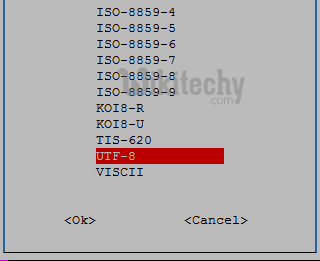Upgrade from Ubuntu 10.04 to Ubuntu 12.04
It is extremely counseled that you simply take a picture of your existing server before following these directions. Doing therefore can make sure that if one thing sudden happens, you’ll be ready to restore your server from the backup image.
It is additionally your imperative, as a Self-Managed client, to create certain your put in applications that presently work on Ubuntu ten.04 additionally work on Ubuntu twelve.04.
Pre-Flight Check
- These directions square measure meant specifically and just for upgrading from Ubuntu ten.04 to Ubuntu twelve.04 in Liquid internet North American country Central Zone A.
- I’ll be engaging from a Liquid internet Self-Managed Ubuntu ten.04 server, and I’ll be logged in as root.
Steps to Upgrade from Ubuntu 10.04 to Ubuntu 12.04
Step 1: Check Your Kernel Version
This method solely applies servers that square measure Ubuntu ten.04, and have the kernel version two.6.36-rc8101910.
Use the subsequent command to visualize your Ubuntu version:
[pastacode lang=”less” manual=”lsb_release%20-a” message=”” highlight=”” provider=”manual”/]The results of the above command ought to look alike to:
No LSB modules square measure obtainable.
Distributor ID: Ubuntu
Description: Ubuntu ten.04.4 LTS
Release: ten.04
Codename: lucid
Use the subsequent command to examine your kernel version:
[pastacode lang=”less” manual=”uname%20-r” message=”” highlight=”” provider=”manual”/]The results of the above command ought to look precisely like:
2.6.36-rc8101910
Step 2: steel oneself against The Upgrade
First, you’ll follow a straightforward best practice: making certain the list of obtainable packages is up thus far before putting in something new.
[pastacode lang=”less” manual=”aptitude%20-y%20update” message=”” highlight=”” provider=”manual”/]Then it’s a matter of just running one command for installation via aptitude:
[pastacode lang=”less” manual=”aptitude%20-y%20install%20update-manager-core” message=”” highlight=”” provider=”manual”/]Step 3: Begin the Upgrade from Ubuntu 10.04 to Ubuntu 12.04
Once the packages in the previous step have been installed you’re ready to proceed with the upgrade. Start the upgrade with the following command:
[pastacode lang=”less” manual=”do-release-upgrade” message=”” highlight=”” provider=”manual”/]You should receive a warning message asking whether or not or not you would like to continue upgrading over SSH, with the choice of respondent y or N . Presumptuous you befittingly took a picture of your Storm server, it’s safe to enter y, then hit enter, to continue.
Checking for a replacement Ubuntu unleash
Done Upgrade tool signature
Done Upgrade tool
Done downloading
authenticate ‘precise.tar.gz’ against ‘precise.tar.gz.gpg’
extracting ‘precise.tar.gz’
Reading cache
Checking package manager
Continue running beneath SSH?
This session seems to be running beneath ssh. it’s not suggested to perform Associate in Nursing upgrade over ssh presently as a result of just in case of failure it is more durable to recover.
If you continue, a further ssh daemon are started at port ‘1022’.
Do you need to continue?
[pastacode lang=”less” manual=”Continue%20%5ByN%5D%20y” message=”” highlight=”” provider=”manual”/]Next, you’ll get another message confirming that another sshd port goes to start… hit enter to continue.
Starting extra sshd
To make recovery just in case of failure easier, an extra sshd can be started on port ‘1022’. If something goes wrong with the running ssh you’ll be able to still hook up with the extra one.
[pastacode lang=”less” manual=”To%20continue%20please%20press%20%5BENTER%5D” message=”” highlight=”” provider=”manual”/]Step 4: Complete the Upgrade from Ubuntu 10.04 to Ubuntu 12.04
You will be prompted to ‘restart services during a package upgrade without asking’. Though it may cause services on your server to go down briefly, select Yes then hit enter to continue.
Next, you’ll be prompted regarding plymouth.conf; Type Y and hit enter to continue.
[pastacode lang=”less” manual=”***%20plymouth.conf%20(Y%2FI%2FN%2FO%2FD%2FZ)%20%5Bdefault%3DN%5D%20%3F%20Y” message=”” highlight=”” provider=”manual”/]You’ll also be prompted about the Console Setup; Be sure UTF8 is selected and then hit enter TWICE to continue.

Next, you’ll be prompted about obsolete packages; type Y and hit enter to continue.
Remove obsolete packages?
11 packages are going to removed
[pastacode lang=”less” manual=”Continue%20%5ByN%5D%20Details%20%5Bd%5D%20y” message=”” highlight=”” provider=”manual”/]Now, DON’T reboot the server; type N and hit enter to continue.
The system upgrade is complete.
Restart essential
To finish the upgrade, a restart is compulsory.
If you select ‘Y’ the system will be restarted.
Step 5: Install the Updated Kernel
Follow a simple best practice: ensure the list of available packages is up to date before installing anything new.
[pastacode lang=”less” manual=”aptitude%20-y%20update” message=”” highlight=”” provider=”manual”/] [pastacode lang=”less” manual=”aptitude%20-y%20install%20linux-image-virtual” message=”” highlight=”” provider=”manual”/]You’ll receive a prompt about a ‘new version of /boot/grub/menu.lst’ being offered. Select install the package maintainers version and hit enter to continue.

Step 6: Check Your Work
Log back into your server as root and to check your Ubuntu version type using the command given below
[pastacode lang=”less” manual=”lsb_release%20-a” message=”” highlight=”” provider=”manual”/]The result of the above command should look comparable to:
No LSB modules are available.
Distributor ID: Ubuntu
Description: Ubuntu 12.04.4 LTS
Release: 10.04
Codename: precise
Use the following command to check your kernel version:
[pastacode lang=”less” manual=”uname%20-r” message=”” highlight=”” provider=”manual”/]Verify the output shows you are running a 3.2.X kernel (such as ‘3.2.0-65-virtual’).
